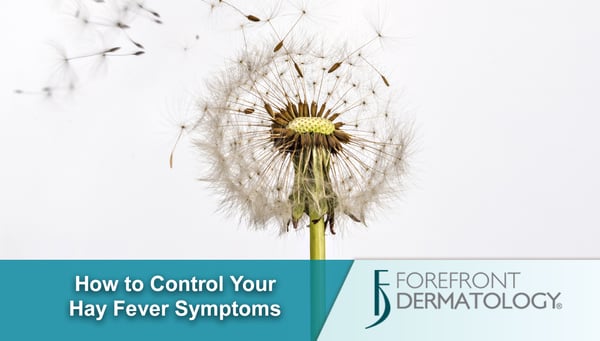
April showers bring May flowers… and pollen. Not only are we welcoming spring, we are also greeting allergy season. According to the Center for Disease Control and Prevention, over 25 million Americans suffer from hay fever each year. The following tips will help control those hay fever symptoms.
1. Pinpoint Your Allergy
The first step in controlling the effects of hay fever is to determine what you are allergic to. If you already know you have a great start. If not, see your physician to help diagnose your allergy. According to Pollen.com, allergy skin tests are widely available and typically measure your body’s reaction when contacted by specific allergens. A test often measures several allergens at the same time.
2. Pay Attention to Pollen Levels
Now that you know what you are allergic to, pay attention to the pollen levels in your area. The website www.pollen.com tracks, collects and broadcasts the levels across the country and determines their severity level. Knowing this information will help you plan your day ahead.
3. Stay Indoors
When pollen levels are high, people with severe hay fever symptoms should consider staying indoors. Between 5am and 10AM in the morning is the most common time for pollens to be prevalent. If possible keep your household filters clean to prevent blowing allergens around your home. If outdoor tasks are critical during high pollen levels, consider asking for help from a family member, friends or a neighbor.
4. Shower Often
If you have hay fever that is triggered by outdoor allergens, it is extremely important to shower immediately after being outside. When pollen levels are high, pollen can become intertwined with your hair and rest on your skin. Showering will help eliminate those allergens, preventing a nighttime attack.
5. Avoid Irritants
With your body already susceptible to allergens, try to lessen the irritation by avoiding key environments. Environments with smoke, as well as coming in contact with insect sprays, household chemicals and fragrances all can worsen the symptoms of hay fever.
6. Allergy Proof Your Home
Although there is no way to completely eliminate allergies from your home, there are many ways to limit them from your house. Keep windows closed when pollen levels are high and use hypoallergenic pillows and mattresses covers to help get a restful night of sleep. Also, make sure your home’s air filter is a HEPA certified filter.
Still Suffering?
If hay fever season is causing your skin to suffer and the end of the tunnel doesn’t seem near, the skincare experts at Forefront Dermatology can help. Find a location near you and make an appointment today.





